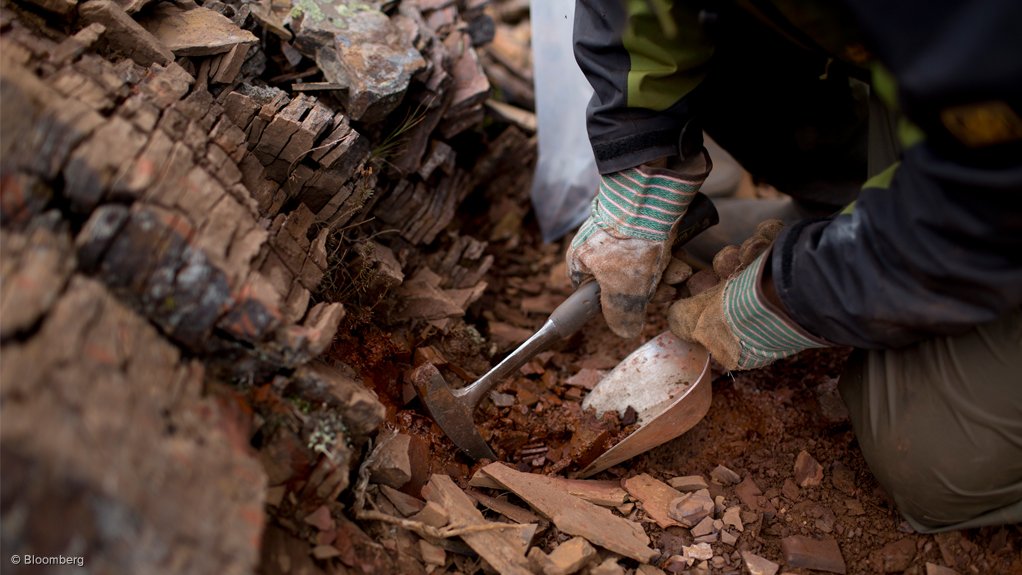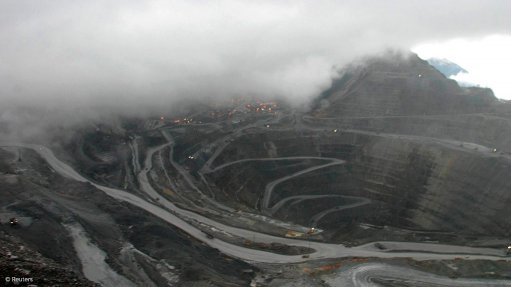Funding dearth stalls junior Santa Fe from drilling likely BC discovery
TORONTO (miningweekly.com) – A lack of investor interest to finance the junior mining industry has seen many an exploration project stall, preventing their owners from getting out in the field to drill resources and develop what would be the world’s next new mines.
One such frustrated company was Santa Fe Metals with its Sully project, in British Columbia.
“We have people standing by to proceed with a drill programme as soon as the company secures financing. We’ve been planning to drill since last fall,” president and CEO Scott Broughton told Mining Weekly Online telephonically from Kimberley, British Columbia.
He stressed that it was a difficult feat for a junior to survive the difficult market. “It is hard to raise financing and it's hard to realise our dreams and do what we believe is worthy work.”
Santa Fe's management had spent substantial time marketing the project and raising money.
Broughton believed that the company’s two projects – Sully and the lesser-known Iron Range property – were great examples of opportunities that, ordinarily, a little company, such as Sante Fe, would not be able to obtain because it would be priced out – enormously – in a different time. The same applied to securing a project team with hundreds of years of combined experience.
“When we tell the story it makes the hair on the back of our necks stand up, [as it is compelling]. The frustration is that we would love to get out there and drill and make that discovery. Then, so many things would be accelerated,” he said.
Being over 50, Broughton had experienced many cycles in the mining industry. "It's a double-edged sword. On the down side, financing is scarce, but on the up side, it costs less to undertake drilling and other exploration work.
“I guess we’re probably early to it, but we have a phenomenal exploration opportunity,” he noted.
Santa Fe had during the first half of the year realigned its strategy to focus completely on advancing the Sully project.
The company had earlier this year divested in its Mexican assets. Broughton labelled this a happy circumstance, in that Santa Fe had willing buyers enabling it to monetise noncore assets, in an extremely junior-unfriendly financing market.
However, he hinted at a refreshed investment interest in the Sully project, especially from Chinese investors, reporting a recent uptick in investor site visits for due diligence purposes. Broughton also advised that there was increased appetite from Canadians looking to invest in flow-through shares, which could prove to be a life buoy for cash-strapped junior explorers.
SULLIVAN’S SISTER
Finding Kimberley's legendary Sullivan mine’s ‘sister’ at today’s commodity prices would be an extremely valuable thing in today’s terms. Sully might have characteristics similar to Sullivan, located about 30 km west of the project, where metals valued at about C$47-billion were produced over the century-long life of the mine.
Broughton believed in the price upside of zinc, saying that even at historic low prices, the mine would still be able to deliver acceptable margins.
The potential higher grades could, just like the Sullivan mine, make the Sully project an extremely low-cost operation.
Broughton explained that the targets they were looking for were exactly the same as the ‘black smoker’ volcanic structures found today on the seafloor. High-grade polymetallic seafloor massive sulphide deposits usually occurred close to where these ancient structures spewed minerals to the surface from deep in the earth's crust. Owing to the significantly stable prehistoric sea conditions near the Sullivan and Sully vents, the deposits became extremely rich, as attested to by the Sullivan mine.
“We would likely find Sullivan’s twin. The drill target is on the geographic time as the Sullivan deposit, but 30 km away,” Broughton said.
STRONG ANOMALY
What compelled him to believe so strongly was that in 2014 the project team had defined twin parallel vertical masses, the East and West targets, at Sully.
Each of the Sullivan-scale targets had geophysical gravity anomalies, with more than 2 000 m of apparent north-south strike, that were estimated to come within 500 m of surface. Coincident, deep filtered airborne magnetic anomalies validated the dual targets and surface zinc, while lead soil geochemical anomalies above the targets could indicate leakage from a mineralised source at depth.
Later in 2014, Santa Fe drilling had intersected Sullivan-time equivalent and adjacent strata, using orientated core defined structural aspects of the geological setting for the first time.
Drilling progressively moved closer to intersecting the centroid of the gravity mass that appeared to coincide with the projected position of Sullivan-time. Santa Fe believed that its most recent completed hole (SU14-09) had passed within just 100 m of the East mass, based on down hole magnetic field and temperature measurements.
Broughton noted that while the initial drilling had not intersected massive sulphides to date, none of the rock types intersected accounted for the large gravity profile measured at the Sully project.
Management believed that the geophysical masses were best explained by the presence of high-specific gravity, sedimentary exhalative-style massive sulphides.
The contrast between the specific gravity of typical Sullivan massive sulphides and the sedimentary country rock was particularly well suited to modern gravity techniques. “Sully's targets presented a discovery opportunity based on their Sullivan-size geophysical anomalies and confirmed Sullivan-time geological setting,” Broughton explained.
Planned exploration for 2015 and 2016 included additional detailed gravity measurements, followed by ongoing drill testing at the East and West targets.
Comments
Press Office
Announcements
What's On
Subscribe to improve your user experience...
Option 1 (equivalent of R125 a month):
Receive a weekly copy of Creamer Media's Engineering News & Mining Weekly magazine
(print copy for those in South Africa and e-magazine for those outside of South Africa)
Receive daily email newsletters
Access to full search results
Access archive of magazine back copies
Access to Projects in Progress
Access to ONE Research Report of your choice in PDF format
Option 2 (equivalent of R375 a month):
All benefits from Option 1
PLUS
Access to Creamer Media's Research Channel Africa for ALL Research Reports, in PDF format, on various industrial and mining sectors
including Electricity; Water; Energy Transition; Hydrogen; Roads, Rail and Ports; Coal; Gold; Platinum; Battery Metals; etc.
Already a subscriber?
Forgotten your password?
Receive weekly copy of Creamer Media's Engineering News & Mining Weekly magazine (print copy for those in South Africa and e-magazine for those outside of South Africa)
➕
Recieve daily email newsletters
➕
Access to full search results
➕
Access archive of magazine back copies
➕
Access to Projects in Progress
➕
Access to ONE Research Report of your choice in PDF format
RESEARCH CHANNEL AFRICA
R4500 (equivalent of R375 a month)
SUBSCRIBEAll benefits from Option 1
➕
Access to Creamer Media's Research Channel Africa for ALL Research Reports on various industrial and mining sectors, in PDF format, including on:
Electricity
➕
Water
➕
Energy Transition
➕
Hydrogen
➕
Roads, Rail and Ports
➕
Coal
➕
Gold
➕
Platinum
➕
Battery Metals
➕
etc.
Receive all benefits from Option 1 or Option 2 delivered to numerous people at your company
➕
Multiple User names and Passwords for simultaneous log-ins
➕
Intranet integration access to all in your organisation





















